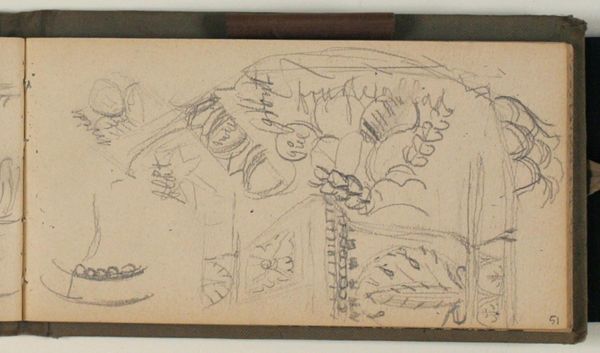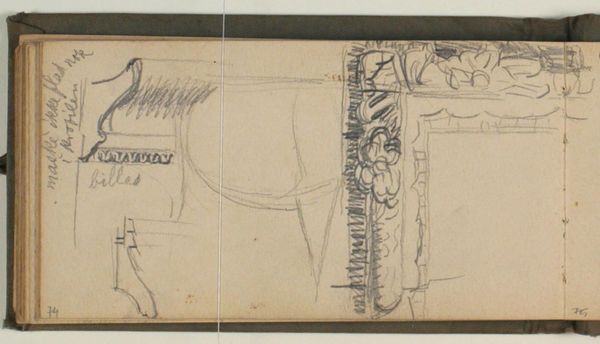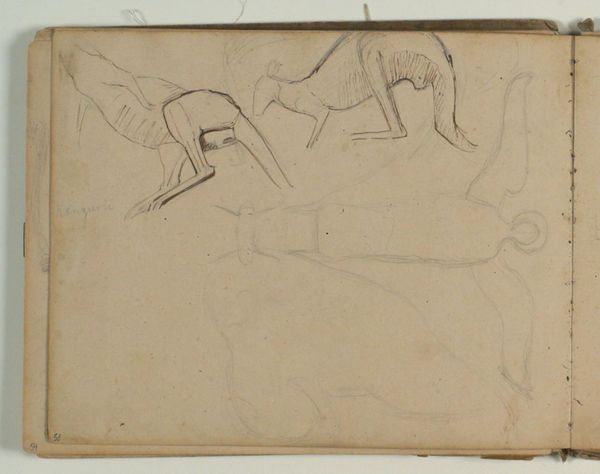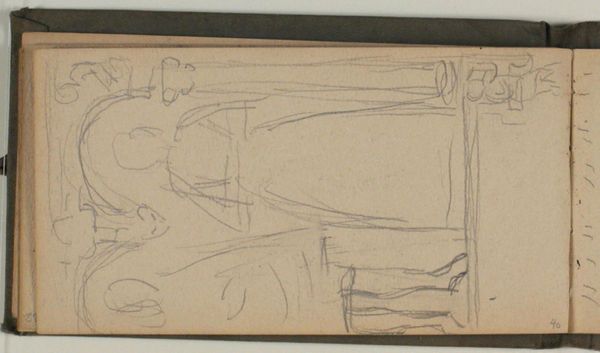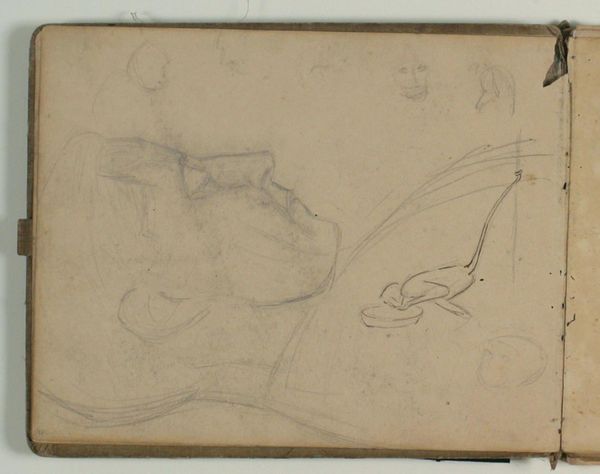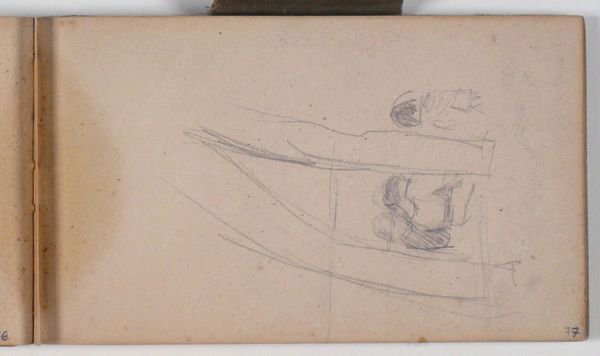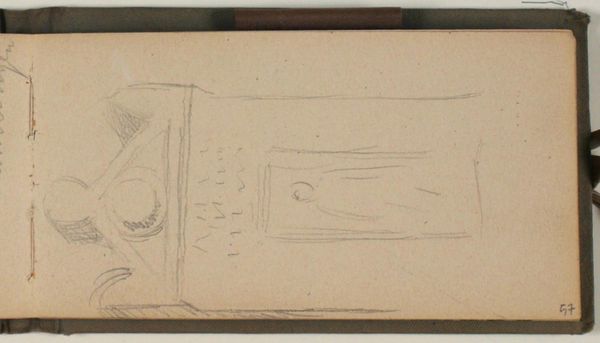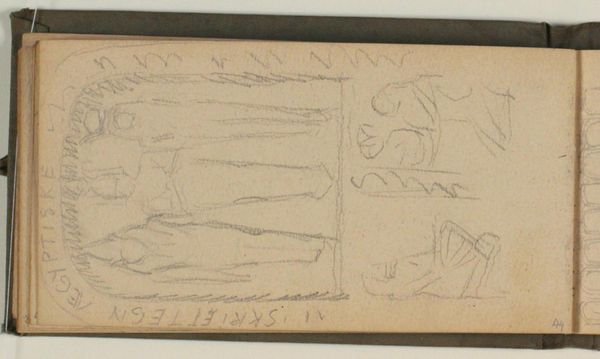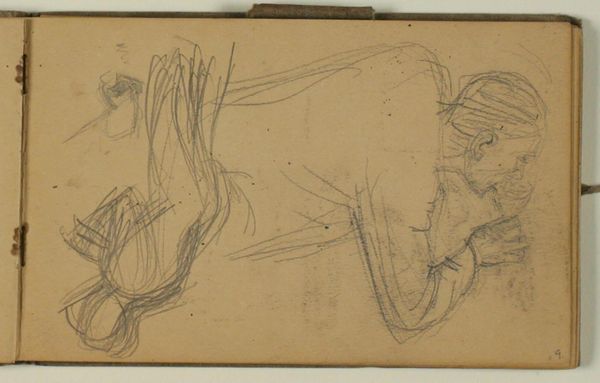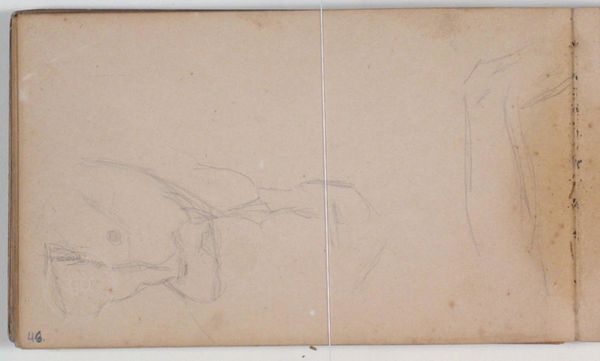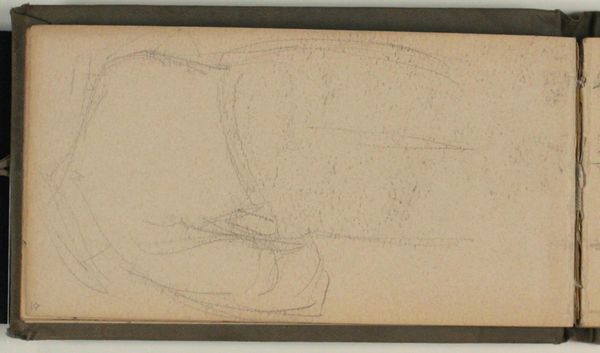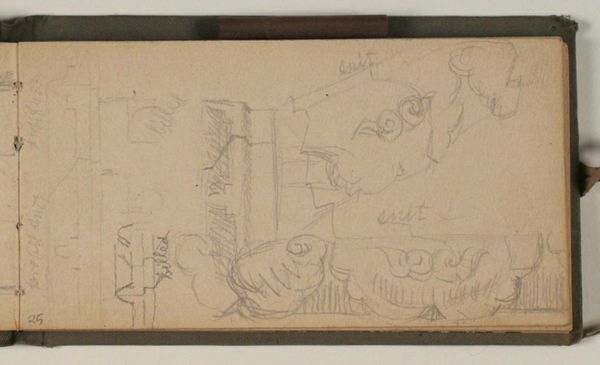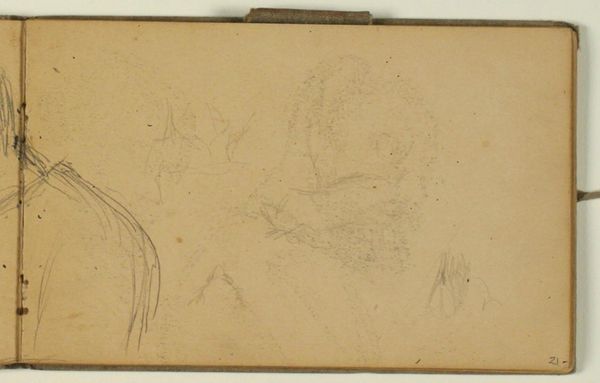
drawing, pencil, graphite
#
portrait
#
drawing
#
figuration
#
ancient-mediterranean
#
pencil
#
graphite
Dimensions: 92 mm (height) x 174 mm (width) (bladmaal)
Curator: This delicate sketchbook page features "Studies of Ancient Gravestones" by Niels Larsen Stevns, dating from 1919. The artist has used pencil and graphite to capture these ancient forms. Editor: My initial impression is of fragmentary survival – glimpses of something grander. These sketched forms feel vulnerable, exposed by time, even in the artist's hand. Curator: That's a poignant observation. Consider Stevns’ process – repeatedly rendering details of the stone carvings, focusing on their composition and ornamental details. Graphite is such a telling material, think about where it comes from; and in terms of labor, these repetitive, slow studies reflect hours upon hours in museums interacting with and thinking through ancient objects. It is his labor as the material means by which Stevns internalises the language of this time gone by. Editor: Precisely, and the sketches themselves become documents of their time, revealing not only Stevns' understanding of ancient aesthetics, but the museum's function itself: as a site of appropriation where the elite get to consume the labor and skills of a bygone, probably enslaved past. His process echoes the centuries of interpretation applied to these objects, and our gaze continues this tradition, really. Are we further obscuring, further colonising? Curator: Stevns likely saw himself in conversation with those masters; there is perhaps a deep seated professional need for any artist to be recognized as participating in a longer canon. Still, there’s also something honest in how fleeting they appear; as studies, they reject any pretence of a seamless history and bring forward its partiality. Editor: Indeed. It prompts reflections on how history is constructed, viewed, and who does the viewing! It makes me consider the societal impulses behind celebrating historical objects in the first place, and the institutions that decide whose cultures and traditions will be honored. Curator: This has become so much more for me now than just a quick preliminary sketch of material objects. Thanks for that fresh perspective. Editor: The joy of public art, isn't it? Hopefully, visitors also take a fresh perspective into the world around them, and consider the long reach of cultural appropriation.
Comments
No comments
Be the first to comment and join the conversation on the ultimate creative platform.
